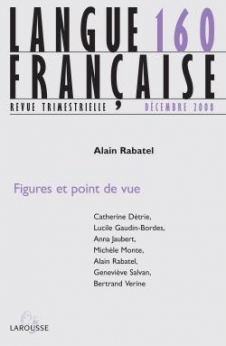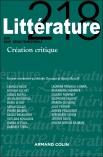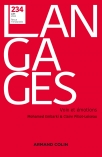
Langue française n° 160 (4/2008)
Pour acheter ce numéro, contactez-nous
Recevez les numéros de l'année en cours et accédez à l'intégralité des articles en ligne.
This paper aims to reassess the figural status of tautology, which rhetorical tradition considers either an “expressive” figure or a vice, by emphasizing its enunciative and pragmatic functioning through precise contextual examples. The comparison between tautology and similar figures such as pleonasm or antanaclasis first shows how the formula/X is X/lies on the well known principle of semantic dissimilation on the one hand and on a tyrannical assimilation of the points of view on the other hand. Second, the analysis points out the tautologist’s taste for both non indexical utterances and doxical point of view. Finally, Lucile Gaudin-Bordes studies the various discursive strategies by which tautology presents as an evidency a vision without a source and reduces alterity in chosing the enunciative postures of coenunciation or superenunciation.

